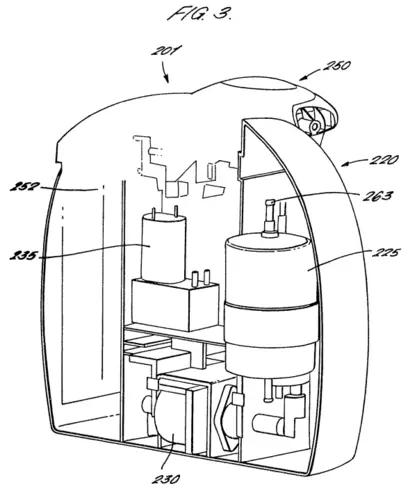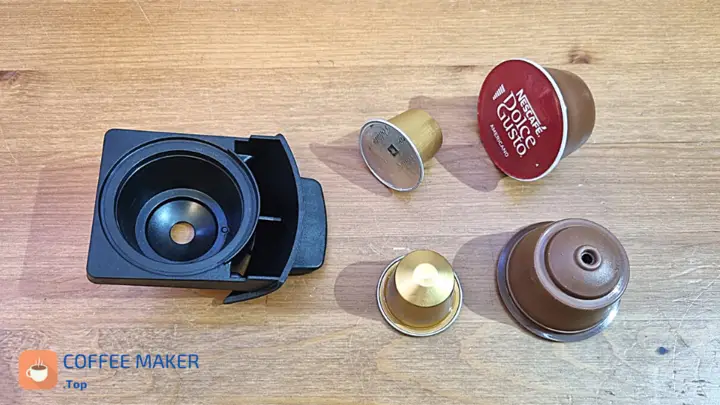Essentially, a capsule coffee machine is a simplified version of the classic espresso machine. The capsule coffee machine simplifies the process of making coffee in many ways:
- There is no need to buy coffee beans, which are usually sold by the kilo, and which would make us accumulate too much coffee at home.
- We can do without a grinder to grind the coffee beans, which means considerable savings.
- The grind thickness is always the correct one inside the capsule, saving us from adjusting this variable ourselves.
- We do not need to weigh the ground coffee we will use in each preparation, as it always comes in the capsule in the same way.
- Nor do we need to press the coffee, which saves us one of the trickiest parts of the process.
In short, thanks to the capsule, the user does not need to have previous knowledge as a barista to prepare a coffee on a par with a traditional pump espresso machine. With the push of a single button, we will always get the same quality of coffee.
Are capsule coffee machines complicated to use?
As we described a moment ago, all capsule coffee machines are based on the same principle; the user has nothing to manipulate when it comes to the coffee, as it is perfectly measured and prepared inside the capsule.
However, most capsule coffee machines will let the user alter only one variable that affects the brewing of the coffee; the amount of water. Although they all come with factory defaults, these values can be altered to suit consumers.
Exceptions are the Tássimo coffee machines and the new Nespresso VertuoLine, which work by reading a barcode inscribed on the capsule.
Using a capsule coffee machine:
- Choose your favourite capsule
- Open the machine head
- Insert the capsule
- Press the corresponding brew button
- Open the capsule holder
- Remove the capsule (some coffee machines do this automatically when opening the capsule holder).
Are capsule coffee machines complicated in their construction?
The first capsule coffee machines were very simple in their construction, with just enough components to make a good espresso coffee. However, as they have evolved, these coffee machines have more operations and safety features, which means more complexity in their construction.
The capsule coffee machine needs a minimum of elements to prepare an espresso coffee. Injecting water at a certain temperature and pressure through the ground coffee contained inside the capsule.
As logic tells us, the coffee maker needs a water reservoir so that water is available whenever it is needed. It also needs a pump to push the water to the required pressure and a heating element to heat it to the right temperature. So the three most important components are water tank, pump and heating element.
A small control board is required to coordinate these three elements, a series of pipes through which the water circulates and a nozzle or head that makes the water penetrate the capsule.
Capsule coffee machines have been with us for barely two decades. As a sign of the simplicity of the original designs, here is the fantastic document that has served as a reference for this article: the original Kraft Foods patent for the design of a Tassimo coffee machine, dating back to 2005.

The image above is only one of the 20 images we can see in the original patent. However, it is very descriptive about the components that this type of coffee maker contains:
225: Heating element.
230: Vibratory pump.
220: Water tank.
235: Air compressor.
250: Injection nozzle.
201: Control board.
263: Heating element outlet valve.
Components of a capsule coffee maker
Extrapolating that prehistoric Kraft design to our days, we can list the following essential components that any capsule coffee maker has:
- A water reservoir. It usually varies between 0.6 litres and 1.5 litres of capacity. It is where we pour the water that will serve to prepare the coffee. (1)
- A pump that makes the water circulate through the internal pipes of the coffee maker. The pump takes the water from the tank and sends it to the heating element.
- A heating element. Imprescindible para calentar el agua. In the capsule coffee machines, the most usual is to use the Thermoblock system. (3)
- A pressure pump is located just after the water tank and before the thermoblock. It injects the water into the capsule at a pressure of 15 or 19 bar, and it is the one that makes the hot water go through the coffee in the capsule at high speed. (4)
- An injector through which water comes out at high pressure. The nozzle pierces the capsule so that the water passes through the capsule’s interior and exits at the lower end of the capsule, joyfully converted into coffee. (5)

Different types of capsules
Although all capsule coffee machines work similarly, each brand uses a different patented capsule system. Dolce Gusto has its capsules, Nespresso has its own, Tassimo has its own, etc.
One brand’s capsules do not fit another brand’s coffee machine: they are different sizes, weights, and sometimes unconventional methods for the machine to recognise them. This is a disadvantage for the consumer; however, it makes sense for the brands because they ensure that users buy their capsules.
There are also compatible or refillable capsules within each system, which are still exclusive to a particular brand (Dolce Gusto compatible capsules, Nespresso compatible capsules, etc.). Still, at least they give the consumer the option to save money or try new varieties.

In this image, the one on the right is a Dolce Gusto capsule, and on the left is a Nespresso capsule. The differences are apparent. Try a capsule adapter between Nespresso and Dolce Gusto.
Maintenance and cleaning of capsule coffee makers
The essential maintenance of a capsule coffee maker is practically reduced to the periodic decalcification and general cleaning of both the tank and the nozzle that serves the coffee. It is one of the significant advantages of capsule coffee machines: they are usually cleaner and easier to maintain than others.
Decalcification is the most critical process, and you should carry it out from time to time. Its frequency depends on two factors: the use of your coffee machine and the hardness of the water you use. The more times you use your coffee maker a day, the more frequently you will have to decalcify it. And the harder the water you use to brew your coffee, too.
To give you an idea: in the best-case scenario (soft water and little use of the coffee maker), it will be enough to decalcify it every 18 or 24 months. On the other hand, if you use hard water and consume 3 or 4 capsules a day, you should decalcify your coffee maker at least every three months.
Check out our descaling guides for more precise information about descaling coffee machines of a particular brand and our cleaning guides for valuable tips and tricks that will extend the life of your capsule coffee machine.

Our Dolce Gusto coffee machine does not do its first step of injecting water into the cup. Please advise how this can be fixed.
Thanks
Hello Leo,
What Dolce Gusto Model is? Did your coffee maker inject water before or never did?